
the BLM1310 approach road.

|
|
Washakie Needles viewed from the BLM1310 approach road. |
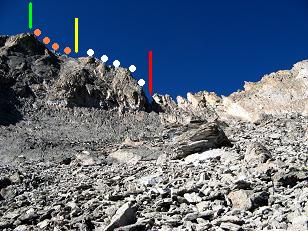
|
|
The upper mountain with various features noted - * Red line for the skyline notch; * Yellow line denotes the second pitch; * Green line for the summit. (Mouse-click for an enhanced view.) |
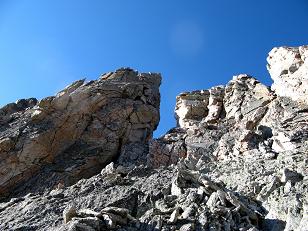
|
|
Closeup view of the skyline notch. The first pitch ascends the steep face to its left; and proceeds over the left skyline. |
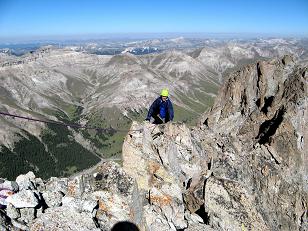
|
|
Adam Helman on the second pitch with a modest degree of exposure. |
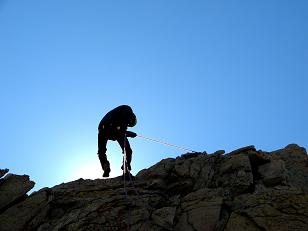
|
|
Adam rappels the first pitch while backlit by the morning sun. |
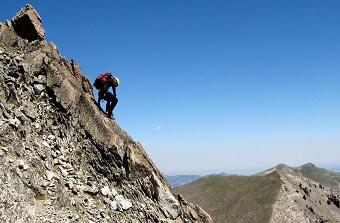
|
|
Adam descends a steep rock slab to avoid nasty talus and scree. |